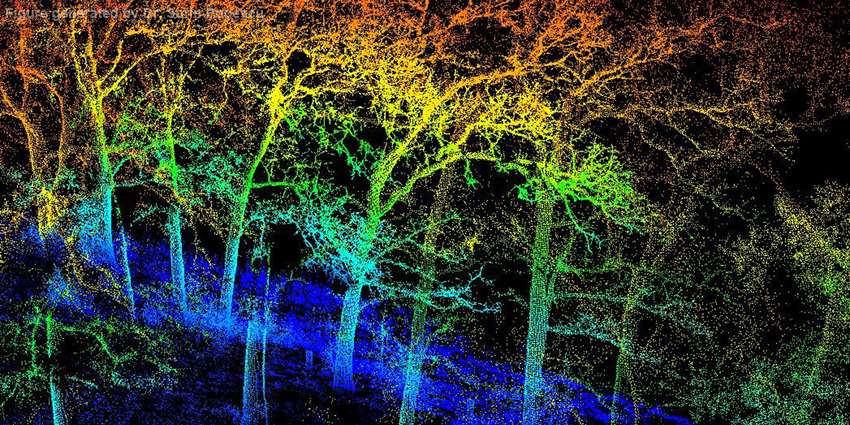Severe drought across Texas since 2011 has produced a unique opportunity for Texas A&M AgriLife Research scientists to gain a greater understanding of the decaying process of trees and the effects on the surrounding ecosystem.
Three AgriLife Research scientists in the Texas A&M University Department of Ecosystem Science and Management have been approved for a three-year, $347,426 grant under the Rapid Response and Novel Research in Earth Science program operated by NASA.
Dr. Sorin Popescu will lead the project, titled Using LiDAR to develop a climate-driven model of the disintegration and decay of trees killed during a severe drought. He will be joined by Dr. Georgianne Moore and Dr. Jason Vogel.
Popescu said that 2011 and 2012 were very difficult years for forests due to drought. During that period, precipitation for most of Texas was 50 to 75 percent less than its long-term average.
Popescu said under the new grant-funded project, the rate of tree disintegration will be monitored through a combination of airborne, unmanned aerial vehicle lidar and terrestrial lidar scanning. Lidar, from Light Detection and Ranging, is a remote-sensing technology that uses laser light to measure the distance from sensor to target and create a three-dimensional model of forest vegetation, in this case.
A site network, already designed by Dr. Chris Edgar of the Texas A&M Forest Service, will facilitate immediate implementation of the research.
Two of the difficulties are: passive remote sensing cannot easily differentiate a single dead tree from a living forest or accurately depict a change in a tree’s three-dimensional structure; and the disintegration and decay of standing trees is difficult to model because the elevated tissues cannot be directly sampled and wood decay may occur at different rates than tissues found on the ground.
Popescu said the technology and modeling structure to overcome these difficulties has been developed.
“Because the newly dead trees in Texas are quickly transitioning to fallen wood, we need to immediately apply these techniques to this extensive, catastrophic event,” he said. “By implementing the study immediately, we will be able to leverage an existing study design and take advantage of the large number of dead trees on the landscape.”
The scientists expect their research to have a long‐lasting impact because it will provide the foundation for understanding how these kinds of events alter future forest structure and function. Also, they said, the remote sensing of tree disintegration and decay will be novel and linked to potential changes in climate, making the results potentially transferable to other forest ecosystems.
For more information, read the full AgriLife TODAY news release.

